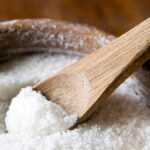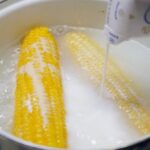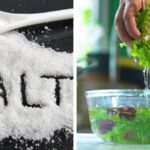Over time, your stainless steel pots can turn yellow or black due to food residue and grease buildup, resulting in stubborn stains that are difficult to remove. Improper use and delayed cleaning can further contribute to the loss of their shiny appearance.
Not only does this affect the aesthetics of your pots, but it can also reduce their heat conduction, leading to unnecessary gas wastage during cooking. Therefore, to maintain the cleanliness and optimal condition of your stainless steel pots, regular cleaning is essential.
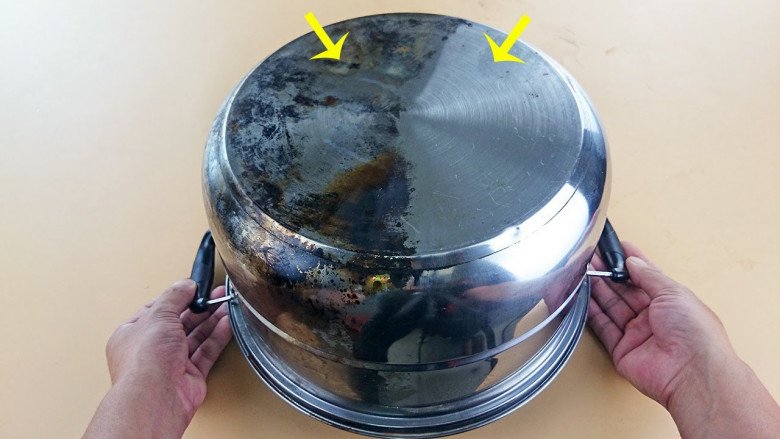
To remove stains from your stainless steel pots, you can try the following simple methods:
Method 1: White vinegar + baking soda + mosquito coil ash + salt
Spray white vinegar onto the outer surface of the pot. White vinegar helps to soften and loosen the stains. Next, sprinkle a small amount of mosquito coil ash around the pot.
Mosquito coil ash is a type of plant ash that contains alkaline substances. These act as natural detergents and have strong decontamination abilities. Moreover, the fine particles in the ash help to polish the surface, making it easier to remove stubborn stains and restore the pot’s original shine.
After applying the ash, sprinkle baking soda onto the outer surface of the pot. Baking soda is a powerful cleaning agent, and when mixed with a detergent solution, it creates a large volume of bubbles, enhancing the cleaning effect. Leave it on for about half an hour to allow the stains to loosen, making the scrubbing process easier.
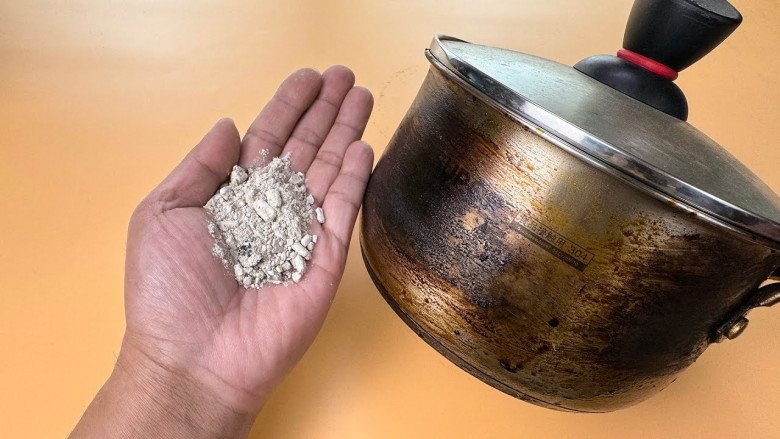
After half an hour, use a steel scrubber to scrub the outer surface of the pot. You can also add some salt to increase the abrasiveness and facilitate stain removal.
Once you’re done scrubbing, simply rinse the pot with clean water, and your stainless steel pot will be sparkling clean and shiny like new.
This method can also be used to remove stubborn black and yellow stains from the inside of your pot.
Method 2: Baking soda + white vinegar
For this method, spray white vinegar onto the surface of the stainless steel pot, and then sprinkle baking soda on top. Next, cover the surface with a piece of paper towel and spray more white vinegar onto it.
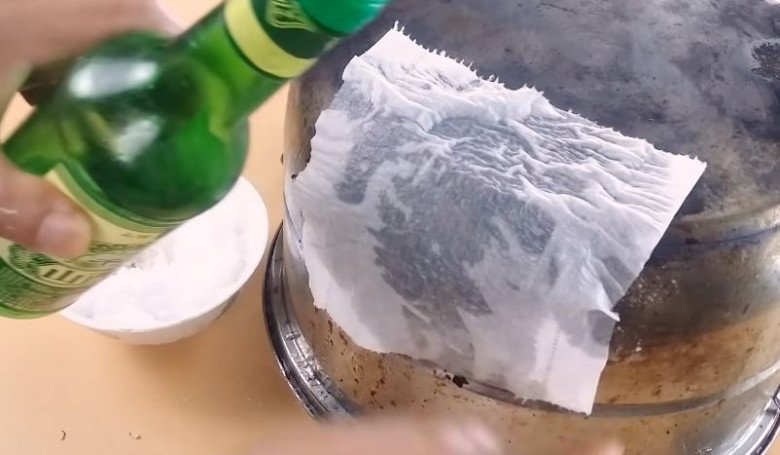
Let it sit for a few hours or overnight, and then remove the paper towel. You’ll be amazed at the results! The surface of your pot will be noticeably brighter and cleaner, even with light stains. For more stubborn stains, use a steel scrubber to gently scrub the surface, and your pot will be as good as new.
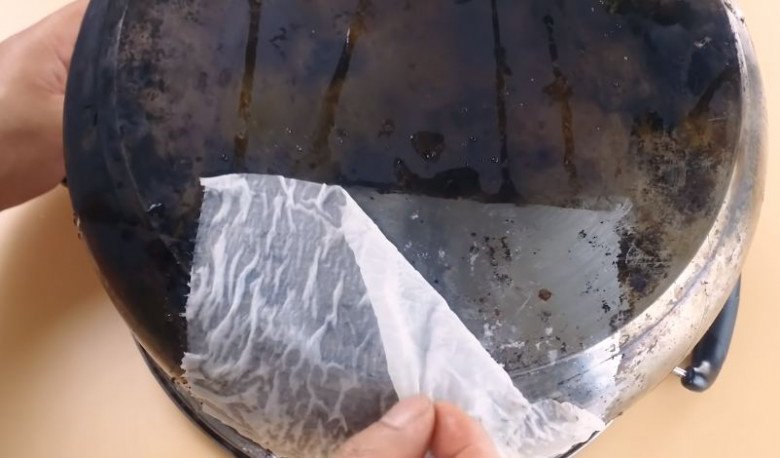
Method 3: Pineapple Peel
There is also a simpler method to clean your stainless steel pots. For this method, you only need to prepare an appropriate amount of pineapple peel and place it in the pot along with some water. Make sure the water level is higher than the grease and dirt marks.
Place the pot on the stove and bring the water to a boil for 15 to 20 minutes. Once the water has boiled, pour it out and discard the pineapple peel. Use a cloth to gently wipe the surface of the pot until it is clean.
To better protect your stainless steel pots, it’s important to use them correctly. Try to keep the flame focused in the center of the pot to prevent the fire from spreading to the entire bottom surface. This will help minimize yellowing or blackening around the pot’s walls.
The Ultimate Guide to Corn on the Cob: Unlocking the Secret to Tender, Sweet Perfection
To enhance the flavor of boiled corn, there are a few secret ingredients that can make all the difference. By adding these ingredients, you’ll find that your corn is transformed into a softer, sweeter treat. It’s an easy way to take your boiled corn to the next level, and it’s a trick that every corn lover should know.
The Ultimate Guide to Washing Produce: Avoid These 3 Common Mistakes That May Do More Harm Than Good
“Rinsing vegetables with these three common habits can do more harm than good. In fact, these washing methods can cause a deeper penetration of toxins, putting your health at risk. Discover the three wrong ways to wash your veggies, as revealed by Dr. Tan Dunci from Taiwan’s Chang Geng Memorial Hospital, and learn how to effectively rid your produce of harmful pesticides.”

























